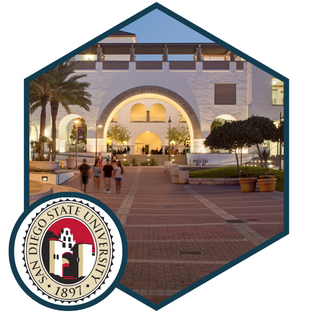San Diego State University (SDSU) has used Impact by Instructure since 2018. In 2020, the institution experienced many important changes, including a full migration from a legacy LMS to Canvas, all in the midst of adapting to the challenges of temporarily moving learning online due to the COVID-19 pandemic.
The Challenge
Like so many places of learning, 2020 was a year of change for SDSU. Not only had the pandemic changed the dynamic of SDSU’s face-to-face experience by moving learning online, but the institution was gearing up for some big internal and operational changes.
One major change was the LMS migration from Blackboard to Canvas, where the key challenge was getting everybody aligned in the new system and overcoming barriers to adoption and engagement as efficiently as possible.
Key Insights
Impact allowed SDSU to eectively communicate both institutional and EdTech changes during intensely critical periods
Insights and feedback gathered with Impact fueled a more finely calibrated overall communication strategy
Contextual and role-sensitive messages built using Impact within Canvas created optimal, two-way communication streams
Data-driven, timely action increases adoption and overall user engagement
The Solutions
With Impact by Instructure, Sean Hauze, Director of Instructional Design & Academic Media at SDSU, along with his team, were able to leverage Canvas usage insights and drive action from the students and faculty through in-app messaging. By focusing on user roles and other relevant characteristics, the team was able to target specific messages to specific users and monitor their engagement with the content. By identifying key escalation areas associated with the migration to the Canvas LMS, Sean and his team were also able to provide a smooth transition through all their EdTech and third-party tool changes.
One key institutional value at SDSU is being respectful and mindful of the communication delivered to students. Essentially, with the shift to online and hybrid learning in 2020, there was a large quantity of information being thrown at students and faculty all at once, and it was important to find the most efficient way of delivering the most vital and timely information in the right place to the correct users without oversaturating their channels.
Throughout each of these components of transitions, Impact by Instructure was a key tool for us within instructional technology services to communicate.
Sean Hauze
Director of Instructional Design & Academic Media San Diego State University
With Impact, SDSU is achieving this responsible and effective messaging by not only having the tool to target relevant segments of their Canvas users, but also by having the insights to learn about the behavior of their users to see what is working and what isn’t. Impact collects performance statistics, tool usage reports and even allows SDSU to compare adoption across courses to identify the best use-cases. With all this data, Sean and his team get to see the state of their messaging and take action to reduce support escalations by providing context and role-sensitive resources.
When asked what one of Sean’s favorite features is, he replied with ‘Feedback Collection.’ Institution-wide communication strategies are hard to perfect, especially when you are in the middle of migration and need to ensure that all users are aware of new functionalities and changes in their course touchpoints. By enabling the feedback collection option on the messages placed throughout Canvas, Sean was able to understand how users felt about the content and quickly identify if any changes need to be applied. Impact allows SDSU to choose whether they want to enable users to reply with upvotes, downvotes or open-ended comments. The data collected from this feedback is then easily actionable and is a direct insight into the behavior, needs and preferences of the target audience.
When introducing major changes all at once like SDSU planned, sometimes students and faculty wish to better understand the need for the change and how it will be executed. For this reason, having the ability to start a conversation based on feedback and deliver demanded information is powerful. Sean also explained that his team was very active in replying and addressing certain feedback which some users were not expecting.
The two-way communication that the Impact tools facilitate between users and Sean’s team not only helped improve their Canvas performance but also made students and faculty feel heard. Sean’s team was able to make changes that would improve the user's online experience in a personalized and timely way.
The Results
In due course, Sean and his team will continue to leverage the insights, messaging and support center structure that Impact provides. With the migration to Canvas completed and many initial goals met around optimizing LMS adoption, one Impact feature on the roadmap for 2021 that Sean is particularly excited about is the introduction of institution-wide permission settings.
According to Sean, the success and reach of Impact’s feature set and accompanying data has led to SDSU’s EdTech team collaboration with their strategic communications leadership on how to best balance all the competing requests and demands for even broader access to Impact.
These permissions will allow campus communicators in different departments to use the dashboard and will lead to an even more personalized and need-based approach of measuring Canvas usage and taking data-driven action to improve adoption.
Download Case Study
